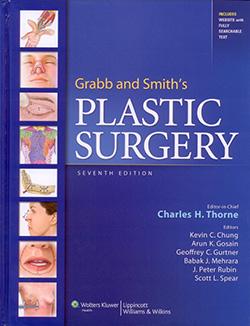The subjects of anesthesia and which technique is the safest are poorly understood by patients. A facelift can be safely performed under local anesthesia with sedation provided by the surgeon, or by intravenous sedation or general anesthesia provided by an anesthesiologist. If the surgeon is to perform the procedure without an anesthesiologist, the patient must be completely healthy. The patient is given diazepam (Valium) 10 mg by mouth 2 hours preoperatively and brought to the facility by an escort. Meperidine (Demerol) 75 mg and hydroxyzine pamoate (Vistaril) 75 mg are administered intramuscularly. Once the effect is demonstrable, the patient is moved to the operating room to initiate the procedure. Midazolam (Versed) is given intravenously in 1-mg increments until the patient is sufficiently sedated to tolerate the injections of local anesthetic solution. Additional midazolam (Versed) is given as needed throughout the procedure, also in 1-mg doses.
In most cases, however, facelifts are performed with the help of an anesthesiologist. If the procedure is to be longer than 3 hours because of ancillary procedures, or if the patient has medical problems, then an anesthesiologist is always present.
The anesthesiologist decides where on the spectrum from conscious sedation to general anesthesia the patient is best kept, and it may vary during a procedure. The patient may be under general anesthesia, by any definition, during the injection of the local anesthetic solution, and conscious during other phases of the procedure. In other patients, despite the efforts of the anesthesiologist to provide conscious sedation, the medication will result in loss of the airway, requiring that the anesthesiologist convert the procedure to general anesthesia.
Patients and some other physicians incorrectly believe that patients are safer with “twilight” anesthesia, whatever that is. Local anesthesia is safe and general anesthesia is usually safe, but the least safe anesthetic and the one requiring the most skill to administer is the “in between” anesthetic that patients call “twilight.” Patients who are sedated but who do not have an endotracheal tube in place to control the airway are more likely to have airway problems than a patient who is completely asleep with the ventilation controlled by the anesthesiologist. Many patients who undergo facelift procedures believe they are receiving “sedation,” but they are really receiving intravenous, general anesthesia without an endotracheal tube. There is nothing wrong with the technique in the hands of an expert, but patients should be disabused of the notion that it is safer than general anesthesia.
An ideal anesthetic for facelifting would be associated with a constant blood pressure and no need for vasoactive medications to either raise or lower it. Dips in blood pressure treated with vasoconstrictors, or spikes in blood pressure treated with vasodilators, are to be avoided if at all possible. Blood pressure is ideally kept at approximately 100 mm Hg systolic, depending on the patient’s preoperative blood pressure. Excessive hypotension may obscure bleeding vessels that are best coagulated. Hypertension may be associated with excessive bleeding. The anesthesiologist should inform the surgeon of every medication administered, and the surgeon should inform the anesthesiologist of any increased tendency for bleeding. There are no secrets in the operating room.
Regardless of the type of sedation/anesthesia chosen, the face is injected with local anesthetic solution prior to the dissection. There is some controversy and little definitive data regarding the maximal amount of local anesthetic that can be used. The package insert in the lidocaine bottle states that no more than 7.5 mg/kg of lidocaine should be administered when given in combination with epinephrine. We know, however, that when dilute solutions are used in liposuction of the body, that more than 30 mg/kg of lidocaine is safe. There is evidence that the face differs from the body and that the high lidocaine doses used in the body are not safe in the face. It is reasonable to conclude that doses higher than the 7.5 mg/kg recommended by the manufacturer are probably safe in the face, but this is unproven. Until such proof exists, plastic surgeons should limit the total dose to approximately 7.5 mg/kg. In the my practice, I dilute 500 mg lidocaine (one 50 mL vial of 1% lidocaine, which is the approximate maximum dose for a 70-kg patient) to whatever volume is necessary to perform the entire procedure, no matter how dilute that solution is.
The most common solution I use is 50 mL 1% lidocaine plus 1 mL epinephrine 1:1000 plus 250 mL normal saline for a final volume of 301 mL and a final solution concentration of 0.17% lidocaine with epinephrine 1:300,000.
Because of the dilute nature of the solution used and the fact that the total dose of lidocaine does not exceed the manufacturer’s recommendation, I inject both sides of the face at the beginning of the procedure, despite recommendations by some that only one side should be injected at a time.
If the patient is adequately anesthetized, the injection of the anesthetic solution is rarely accompanied by any change in heart rate or blood pressure. The surgeon must constantly keep the injecting needle moving, however, to avoid a large intravascular injection of the epinephrine-containing solution. If a major change in blood pressure occurs, the surgeon and anesthesiologist must assume that an intravascular injection has occurred and act quickly to limit the extent of hypertension.

Dr. Thorne is the Editor-in-Chief and the author of several chapters in Grabb and Smith's PLASTIC SURGERY, 7th Edition.
